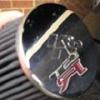Ceramic Stockies
Announcements
-
Similar Content
-
Latest Posts
-
The Plazmaman setup is what I originally had on my RB25 too. Worked really well. In fact,I think I still have it in the garage. Then I went over radiator when I went to the RB30 as it wouldn't clear the bonnet otherwise.
-
I reckon I push my Skyline further back and forth in the garage than you drive yours!
-
That could be caused by cosmic rays!
-
By Dose Pipe Sutututu · Posted
Proof I drive my car -
This should be the nail in every FFP coffin everywhere. What an absolute downgrade. Suprised RB26 people didn't get a better intake manifold with longer runners seeing stuff like this.
-






Recommended Posts
Create an account or sign in to comment
You need to be a member in order to leave a comment
Create an account
Sign up for a new account in our community. It's easy!
Register a new accountSign in
Already have an account? Sign in here.
Sign In Now